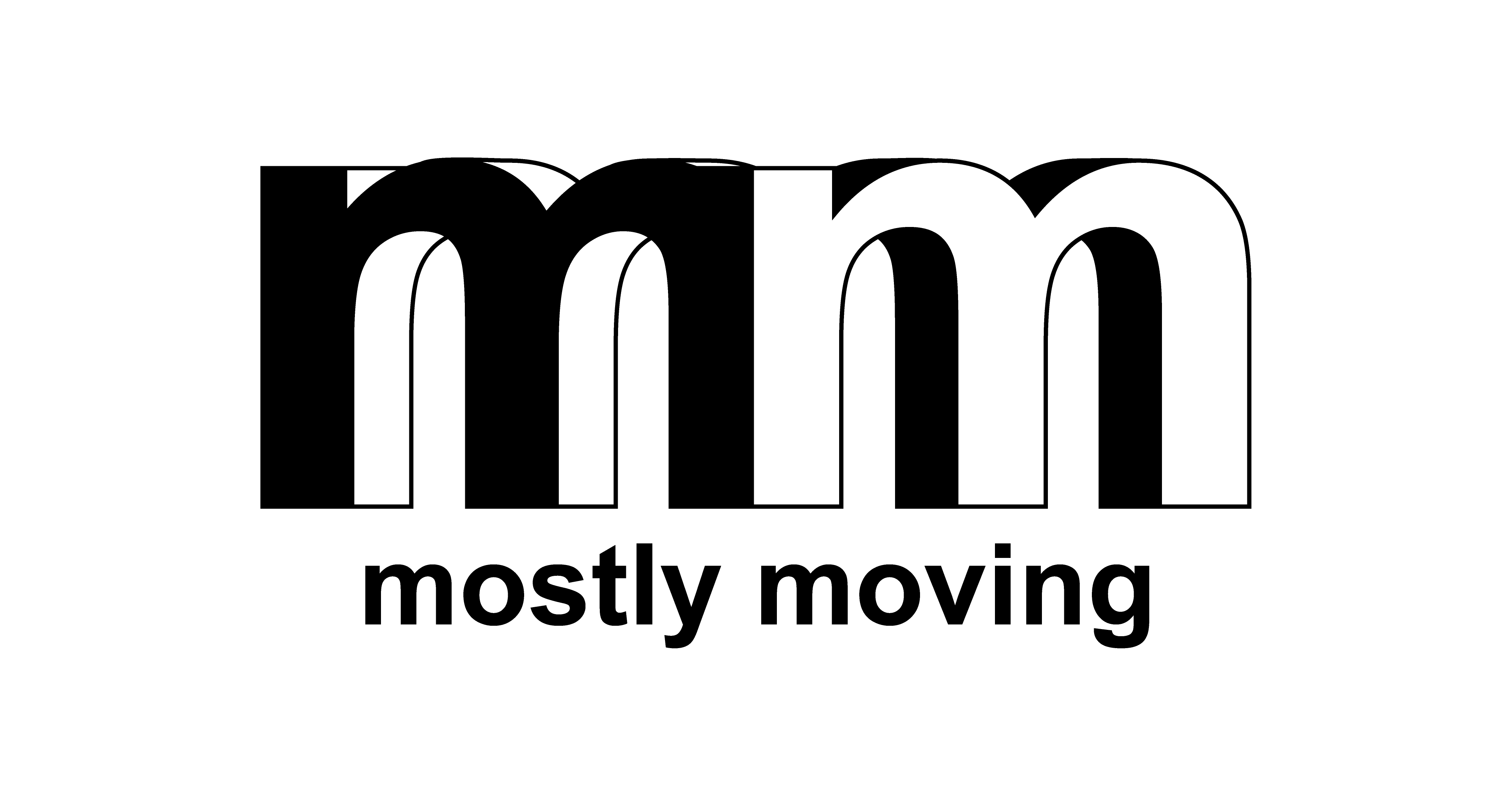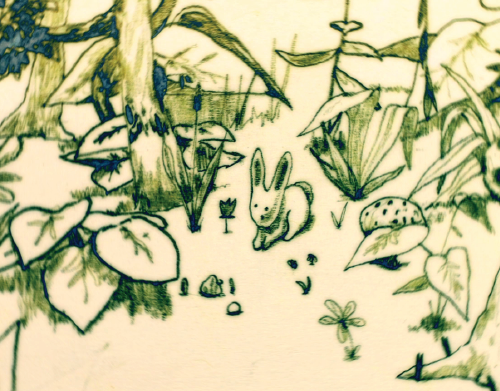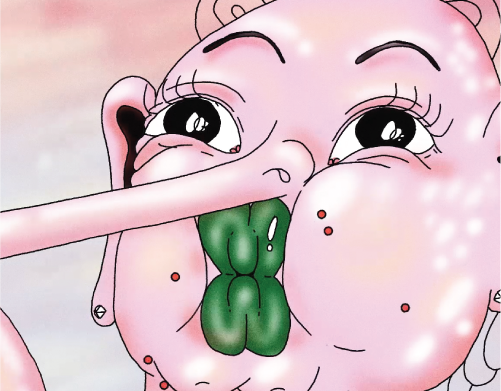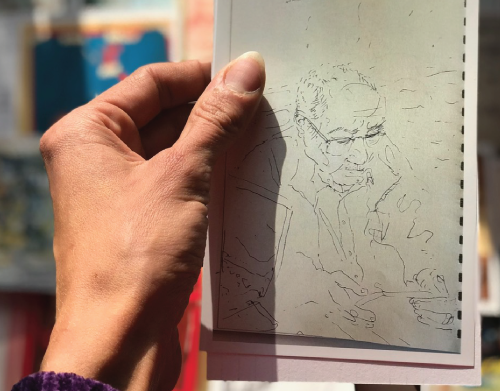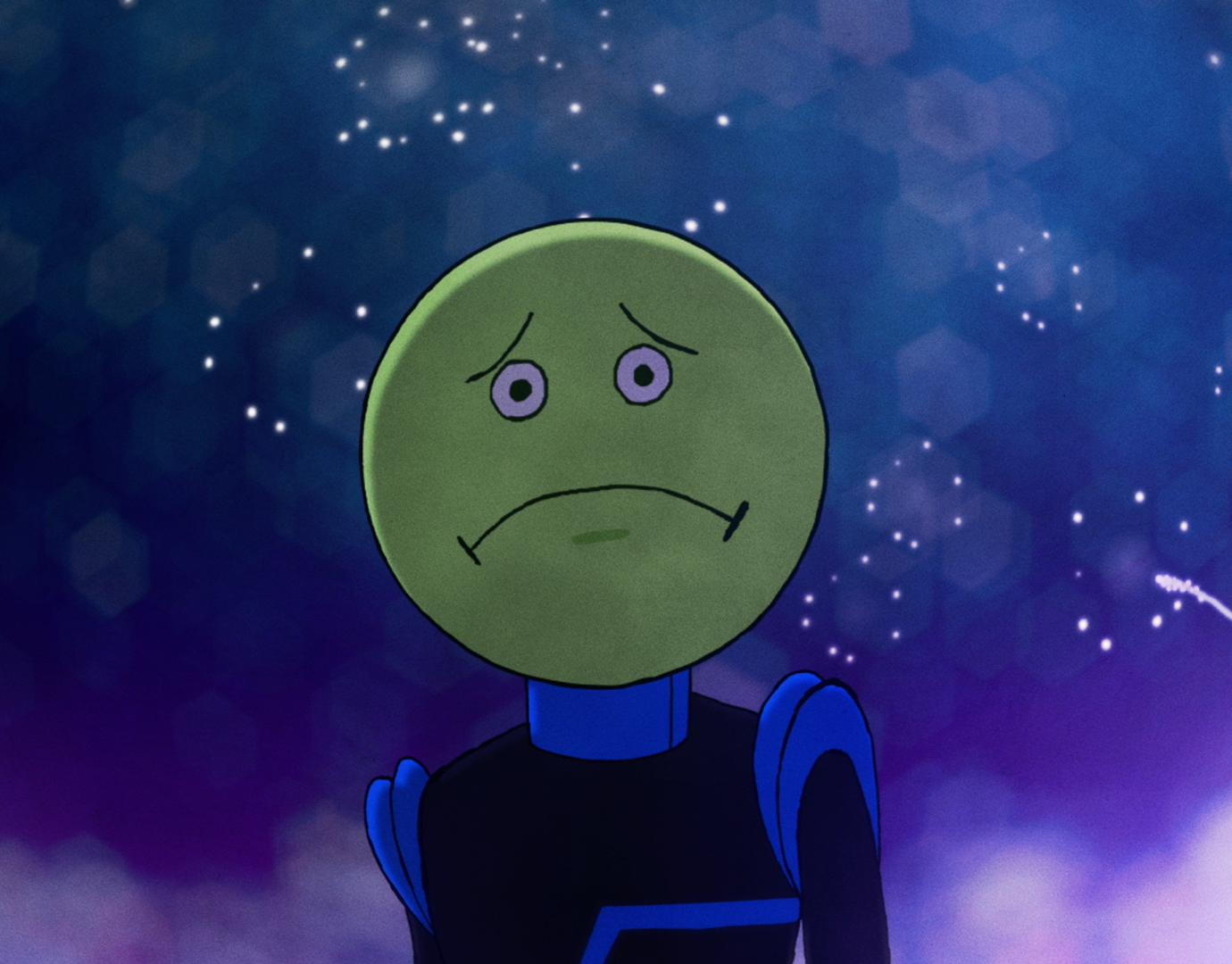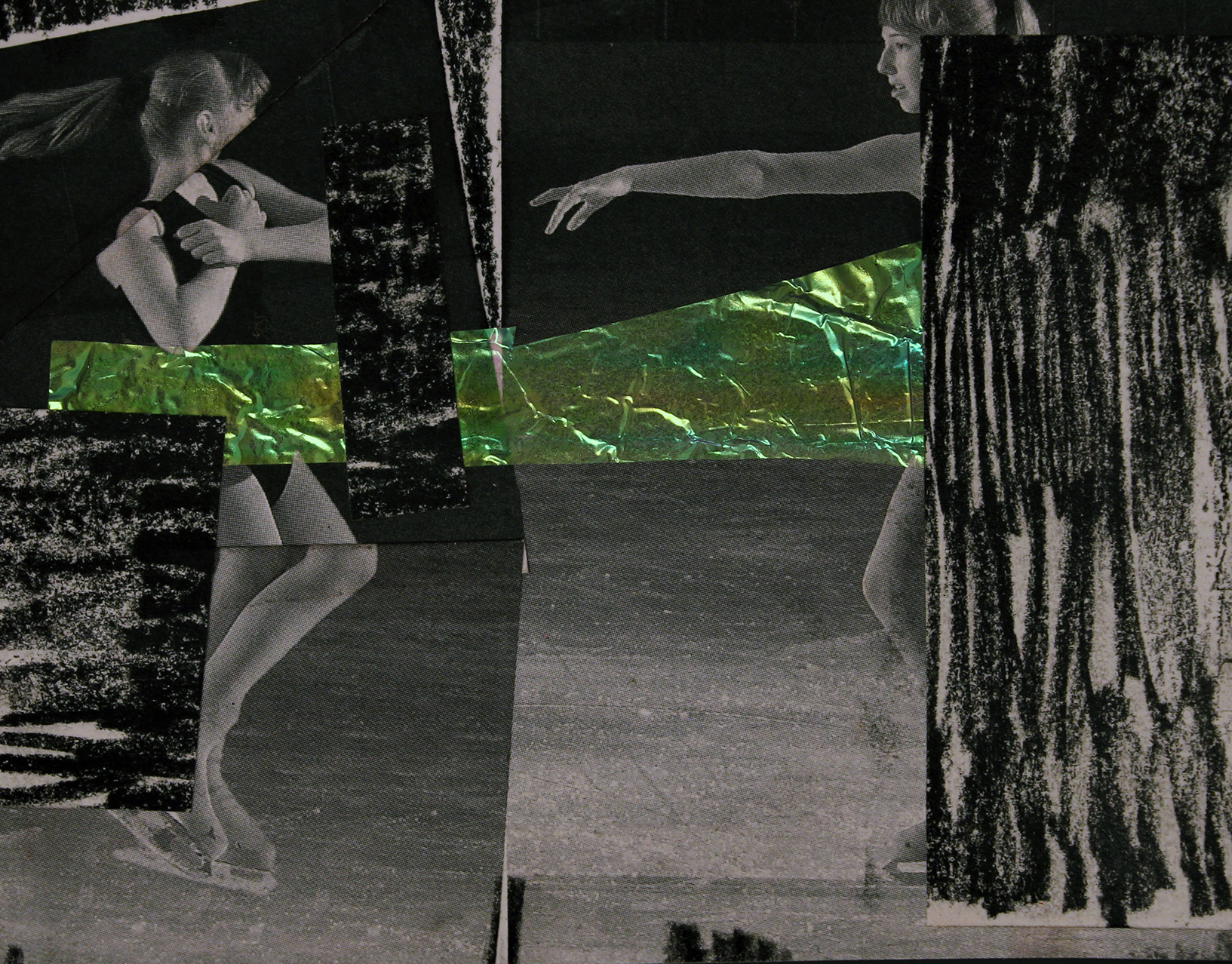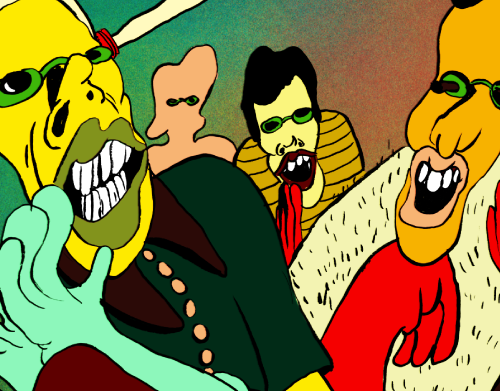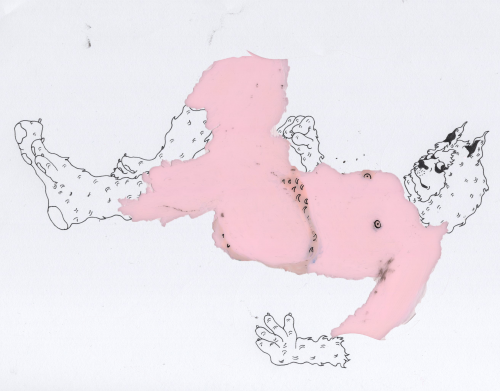Interview with Barry Doupé
from MM05, released March 2020
----
from MM05, released March 2020
----
Barry Doupé is a Vancouver, B.C. based visual artist and animator. He crafts surreal computer animations that combine elements of traditional narrative and experimental cinema while relentlessly distorting notions of time and space. The juxtaposition of human interpersonal situations enacted by crude CG avatars creates a separation in which Doupé explores the fallibility of human interaction, sexuality, and gender. His work plays with the familiar, but takes us deep into the internal psyche of his characters, often breaking down connections between word and image leaving the viewer in a zone of free association. Beyond his longer films, Doupé has produced a number of exciting shorter animations that investigate formal abstraction and technical experimentation. His work has screened at Ann Arbor Film Festival, IFFR, Anthology Film Archives, Centre Pompidou, and the Tate Modern.
----
Mostly Moving: Hi Barry, could you start by telling me a bit about yourself and how you got into animation?
Mostly Moving: Hi Barry, could you start by telling me a bit about yourself and how you got into animation?
Barry Doupé: I'm an artist living in Vancouver, Canada. I mostly work in animation, but I also draw, paint, sculpt, write and work with sound. I first started getting into animation in grade school using yellow post it note pads. I would animate simple things using stick people. Gradually I began to make more complex snippets of things, like water splashes or a hand opening up. From there I went to the Emily Carr University of Art and Design and majored in animation where I continued to focus mostly on hand drawn work, but also experimented with computer animation. Since then I've made some short films and 3 feature length films.
MM: In The Colors that Combine to Make White Are Important (2012) a character says, “Forget about the world existing around you. This is going to be another dimension”. Watching your films often feels like this, like one is being pushed deeper and deeper into an internal, liminal space. Is that an accurate description?
BD: I think so. I like it when a story starts out as one thing and transforms into another. I like the space between thinking something and expressing something, and which thoughts get expressed and which ones don't.
BD: I think so. I like it when a story starts out as one thing and transforms into another. I like the space between thinking something and expressing something, and which thoughts get expressed and which ones don't.
MM: Your most recent film Distracted Blueberry has a runtime of 4.5 hours. Did you set out to make a work that long, or did it grow as you worked on it?
BD: I didn't set out to make a film that was 4.5 hours long. I worked on it until it felt complete, or until I felt like something interesting had happened. Time isn't something that exists on its own. The hours passing in the day are going to be there, either way. It's more a matter of attention. Does this film create a space that I want to give my attention to? It doesn't matter how long it is. I like films that take the time and space they need to articulate something. I also wanted certain scenes to have distance from one another, to create something that had enough distance to be able to reflect on itself in that way.
MM: In Distracted Blueberry, The visuals and dialogue both feel like free associations that are symbolic or poetic rather than literal, especially in the second half. How do you develop your imagery and writing?
BD: I keep libraries of images and texts sorted into different categories that I'm interested in. Then I sort through them and assemble scenes. If something catches my eye, I take a picture of it or write it down. I'm always writing things down and taking pictures of things. I like things that are symbolic, or things that can mean more than one thing at a time. I'm interested in using the matter that makes up our world and seeing how it can fit together in different ways. Sometimes through association or abstraction, and sometimes put against something literal.
BD: I didn't set out to make a film that was 4.5 hours long. I worked on it until it felt complete, or until I felt like something interesting had happened. Time isn't something that exists on its own. The hours passing in the day are going to be there, either way. It's more a matter of attention. Does this film create a space that I want to give my attention to? It doesn't matter how long it is. I like films that take the time and space they need to articulate something. I also wanted certain scenes to have distance from one another, to create something that had enough distance to be able to reflect on itself in that way.
MM: In Distracted Blueberry, The visuals and dialogue both feel like free associations that are symbolic or poetic rather than literal, especially in the second half. How do you develop your imagery and writing?
BD: I keep libraries of images and texts sorted into different categories that I'm interested in. Then I sort through them and assemble scenes. If something catches my eye, I take a picture of it or write it down. I'm always writing things down and taking pictures of things. I like things that are symbolic, or things that can mean more than one thing at a time. I'm interested in using the matter that makes up our world and seeing how it can fit together in different ways. Sometimes through association or abstraction, and sometimes put against something literal.
MM: Human interaction, and its quagmires, seem to be at the root of your films. What draws you to this subject matter in particular?
BD: I'm fascinated by failure. If something is failing, if it's a situation, or dialogue, or a relationship - it triggers an empathic response for me. I become involved in the scenario in a deeper way because it's natural to want things to be rescued or resolved. It's more interesting to me when somebody doesn't catch a frisbee than when somebody does. The incompleteness holds possibilities that open up the scenario. I'm also interested in working with systems that are established and important enough that when they do fail, it means something. If language is failing or breaking down then I'm curious to see what type of communication does occur. There are many ways that people can interact with each other. I like exploring those possibilities.
MM: There’s a tension in your work because the subjects and situations are human and body-oriented, yet we’re viewing it through a distinctly computer-generated lens. Do you find it easier to explore ideas of humanity and sexuality this way?
BD: I do. One of the things that's important to me with the CG is that all this digital material somehow combines to create an authentic lifelike experience. It's really special when that happens. I want the characters to be believable. I also like the tension that arises when a character's behaviour doesn't match their appearance. There is some kind of malfunction or slippage that puts stress on our sense of reality.
I've worked with real live actors on a project in the past - and I really enjoyed it. My ideas working with real actors tend to be a bit different than the ones that I get working with the CG ones. I feel a bit freer to work with highly charged or sexual content in the CG universe because I don't have to ask the same kind of permissions. I don't have to think about what somebody might be comfortable saying or doing.
BD: I'm fascinated by failure. If something is failing, if it's a situation, or dialogue, or a relationship - it triggers an empathic response for me. I become involved in the scenario in a deeper way because it's natural to want things to be rescued or resolved. It's more interesting to me when somebody doesn't catch a frisbee than when somebody does. The incompleteness holds possibilities that open up the scenario. I'm also interested in working with systems that are established and important enough that when they do fail, it means something. If language is failing or breaking down then I'm curious to see what type of communication does occur. There are many ways that people can interact with each other. I like exploring those possibilities.
MM: There’s a tension in your work because the subjects and situations are human and body-oriented, yet we’re viewing it through a distinctly computer-generated lens. Do you find it easier to explore ideas of humanity and sexuality this way?
BD: I do. One of the things that's important to me with the CG is that all this digital material somehow combines to create an authentic lifelike experience. It's really special when that happens. I want the characters to be believable. I also like the tension that arises when a character's behaviour doesn't match their appearance. There is some kind of malfunction or slippage that puts stress on our sense of reality.
I've worked with real live actors on a project in the past - and I really enjoyed it. My ideas working with real actors tend to be a bit different than the ones that I get working with the CG ones. I feel a bit freer to work with highly charged or sexual content in the CG universe because I don't have to ask the same kind of permissions. I don't have to think about what somebody might be comfortable saying or doing.
MM: A common thread in your work is the idea of testing your viewer, whether with a particularly slow shot, repetition, or a very long film. Can you speak to that notion?
BD: Recently I screened Distracted Blueberry in Victoria at the Antimatter Media Arts Festival. My parents came to see it and I asked my dad what he thought afterwards. He said it was “not enjoyable.” This is something that has really stuck with me and something I've been giving a lot of thought to. To me, I enjoy the sensory experience of watching a film. I'm curious about what can happen in a scenario. I remember the first time I saw Micheal Snow's Wavelength and the feeling of discovery I had. The feeling of feeling something. It's a difficult experience, but also interesting and rewarding. So little happens, that what does happen is important. It's both enjoyable and not enjoyable at the same time. I have a difficult time interpreting what other people might find challenging or enjoyable or annoying. I think I'm looking to make work that's very generous and rewarding, but also tests certain sensory limits to get there. Going forward I think I need to challenge myself to make something that a regular person like my dad would find enjoyable. I'm not sure what that would look like, but it won't be 4.5 hours long.
MM: Can you talk about the way you structure your work?
BD: I plot out the general structure by writing a script that defines the larger shape of the film. Then I leave space to improvise or add things as I go. I like to have a main idea or subject that is described through a gradual process of negation. Described by not describing it, but by filling in all the things that surround it.
BD: Recently I screened Distracted Blueberry in Victoria at the Antimatter Media Arts Festival. My parents came to see it and I asked my dad what he thought afterwards. He said it was “not enjoyable.” This is something that has really stuck with me and something I've been giving a lot of thought to. To me, I enjoy the sensory experience of watching a film. I'm curious about what can happen in a scenario. I remember the first time I saw Micheal Snow's Wavelength and the feeling of discovery I had. The feeling of feeling something. It's a difficult experience, but also interesting and rewarding. So little happens, that what does happen is important. It's both enjoyable and not enjoyable at the same time. I have a difficult time interpreting what other people might find challenging or enjoyable or annoying. I think I'm looking to make work that's very generous and rewarding, but also tests certain sensory limits to get there. Going forward I think I need to challenge myself to make something that a regular person like my dad would find enjoyable. I'm not sure what that would look like, but it won't be 4.5 hours long.
MM: Can you talk about the way you structure your work?
BD: I plot out the general structure by writing a script that defines the larger shape of the film. Then I leave space to improvise or add things as I go. I like to have a main idea or subject that is described through a gradual process of negation. Described by not describing it, but by filling in all the things that surround it.
MM: Making animation takes a lot of time, especially for someone who makes feature-length work. Do you find your idea’s shifting from inception to completion, and if so how does that affect the work?
BD: Yes, the work often takes years to finish. Distracted Blueberry took 5 years to make. It's tricky because as an artist the things that you find interesting are always evolving, but you have to find a way to fold those into your older ideas so the work maintains a level of consistency. Sometimes I have to take a break and work on another project to regroup my thoughts. It helps to release ideas that won't fit into the film. I often establish certain things at the outset that are fixed, like certain characters or a colour pallet. Often I'll make scenes that wind up being shelved because they don't fit within the larger context of the film.
BD: Yes, the work often takes years to finish. Distracted Blueberry took 5 years to make. It's tricky because as an artist the things that you find interesting are always evolving, but you have to find a way to fold those into your older ideas so the work maintains a level of consistency. Sometimes I have to take a break and work on another project to regroup my thoughts. It helps to release ideas that won't fit into the film. I often establish certain things at the outset that are fixed, like certain characters or a colour pallet. Often I'll make scenes that wind up being shelved because they don't fit within the larger context of the film.
MM: Beyond your character films, you've created a number of shorter experiments over the years. Can you talk about these projects and where they come from?
BD: The shorter works are usually something I do between working on the longer films. Sometimes they're part of a curatorial project or a public art piece. I like what they can do. They're like little puppies, or little pieces of energy. It's exciting for me to have some sense of variety or discovery in my working process. If I've just finished working on something that has one set of rules, the next project will consider a different set of rules. It could be a different program or format or length. I find that bringing myself out of whatever familiarity I had helps me to make mistakes and stumble a bit. That usually opens up ideas and gives me the enthusiasm to move forward.
MM: It’s not easy to see your films online. Can you talk about the decision to distribute your work rather than have it freely available online?
BD: I only put clips and trailers online because most people tend to look at things in a very fragmented way on the internet, so it's better to just give them fragments. If you write to me and ask to preview something in its entirety I always respond.
MM: Are you working on anything new at the moment?
BD: I'm working on a series of plaster sculptures. I'm also developing story ideas for a new feature film.
BD: I only put clips and trailers online because most people tend to look at things in a very fragmented way on the internet, so it's better to just give them fragments. If you write to me and ask to preview something in its entirety I always respond.
MM: Are you working on anything new at the moment?
BD: I'm working on a series of plaster sculptures. I'm also developing story ideas for a new feature film.
If you enjoyed this interview, please consider purchasing a physical copy.
Your support keeps the magazine running, thank you.
Your support keeps the magazine running, thank you.
© Mostly Moving 2020
